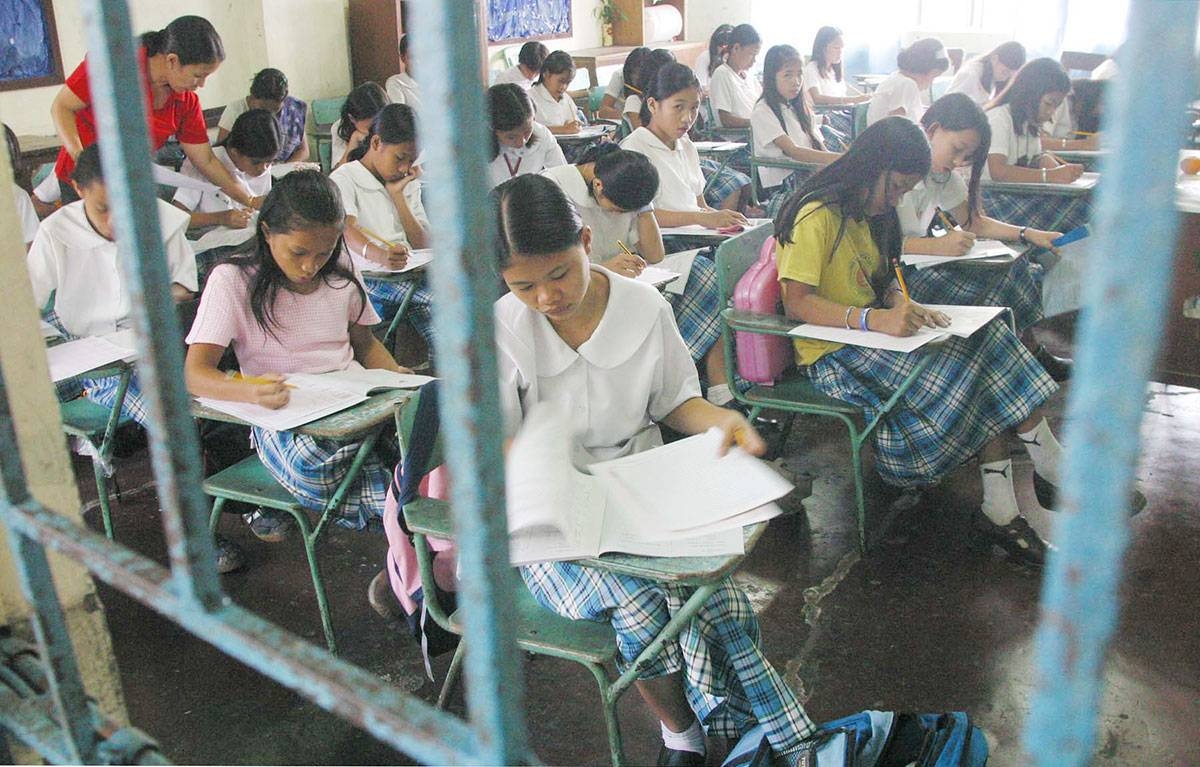The recently released results of the 2022 Program for International Student Assessment (PISA) have revealed that Filipino learners are lagging behind their counterparts in other countries by three to five years, according to the Department of Education (DepEd).
Specifically, the results showed that 15-year-old Filipino students scored an average of 355 points in mathematics, 347 in reading, and 356 in science. These scores were lower than those of their Southeast Asian counterparts and the average scores among countries in the Organization for Economic Cooperation and Development (OECD).
Comparatively, the average scores among OECD countries were 472 points for mathematics, 476 points for reading, and 485 points for science.
Based on the OECD’s calculations, a 20-point difference in test scores is equivalent to a delay of learning by a year. Therefore, 15-year-old Filipino learners are delayed by around three to five years, as highlighted by Alexander Sucalit Jr., DepEd’s PISA focal point person.
These scores reflect that more than 75 percent of 15-year-old students in the Philippines fall below the Level 2 minimum proficiency in math, science, and reading, as defined by the United Nations Sustainable Development Goals.
While this year’s PISA focused on mathematics, the Philippines’ score of 355 indicates that students, at a minimum, can respond to questions involving easy-to-understand contexts presented in a simple representation, as explained by Education Undersecretary for Curriculum and Teaching Gina Gonong.
Regarding reading, the score signifies that students, at a minimum, can understand the literal meaning of sentences and short passages. In science, the score indicates that students can use basic knowledge to identify correct explanations for simple scientific phenomena and, with support, can undertake scientific investigations.
Overall, the country’s average score for this year was nearly the same as the results in 2018, with a slight decline of one point in the science assessment score.
Despite these concerning results, there are some positive aspects to highlight. Gonong pointed out that students in the National Capital Region and Calabarzon Region achieved average scores that were statistically higher than the national average in all three subjects.
She mentioned, “In NCR, some 1 percent of our students reached Level 5 in mathematics; it is like a Singapore performance.” This indicates that there are pockets of excellence within the country’s education system.
Education Undersecretary Michael Wesley Poa expressed hope that the learning recovery programs being implemented will lead to improvements. He emphasized the importance of these programs and the commitment to aggressively pursue them for the benefit of Filipino students.
Vice President Sara Duterte acknowledged the valuable insights that the PISA results provide into the strengths and weaknesses of the education system. She recognized that a significant majority of Filipino students are falling below the proficiency level required for full participation in society and contributing to nation-building.
Duterte also highlighted that these results reflect not only on the education system but also on the collective efforts, investments, and commitment to education by the government and the country as a whole. It is a call to envision a better future for Filipino children.
In an interview with The Manila Times, Fr. Albert Delvo, Chairman of the Coordinating Council for Private Educational Associations of the Philippines, stated that the results were expected. He emphasized that these results present an opportunity for collaboration between government officials and the private sector to introduce education reform.
Delvo said, “This is a challenge and an opportunity; we have to be more determined and all work together to address the gaps in our education system.”
The 2022 PISA results serve as a wake-up call for the Philippines to prioritize and invest in education reform. By identifying the weaknesses and building on the strengths, the country can work towards providing a high-quality education for all Filipino learners, ensuring their success and contribution to society.
Source: The Manila Times







